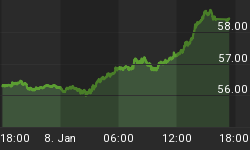Time is running out. If the global community has any chance of meeting the climate change caps set by the Paris Agreement, fossil fuels will have to be phased out and renewable energies implemented at a much, much faster rate. Toward the end of 2018, the Intergovernmental Panel on Climate Change (IPCC) released an alarming report which found that in order to limit global warming to just 1.5 degrees Celsius above pre-industrial levels, the entire world would have to transition to 100 percent clean energy by the middle of the century.
This is a tall order by any metric, but it is made all the more difficult by the fact that many renewable energy sources are still prohibitively expensive and not nearly as efficient as traditional fossil fuels, with many clean energy production processes still in their early phases of development. One source of renewable energy, however, has come a long way over the past few years, and could soon be implemented in greater numbers than ever before, with the potential to completely transform the clean energy landscape.
That resource is solar energy. “Today, we are riding a tremendous wave of advancements in both solar panel efficiency and novel methods of expanding surface area coverage,” reports tech and science news site Singularity Hub. Solar panels were extremely costly and inefficient to manufacture and install just a few years ago, but solar prices have been falling rapidly in recent years as solar tech advances, and now solar energy costs just $3 per watt on average and solar panels average 18 percent efficiency, a huge improvement from where solar power technology was just a few years ago.
While this already bears well for the future of solar energy, it’s just the beginning. Solar energy is set to explode. The Singularity Hub article tellingly titled “The Age of Solar Energy Abundance Is Coming in Hot“ goes on to say that “While the efficiency of current run-of-the-mill solar panels still hovers around 16-18 percent, traditional silicon solar panels have only reached half of their theoretical efficiency potential. And new materials science breakthroughs are now on track to double this theoretical constraint, promising cheap, efficient, and abundant solar energy.”
Thanks to a hyper-competitive solar startup market, we are witnessing particularly rapid advancements in more unobtrusive solar panels designed for urban environments, such as increasingly efficient transparent solar panels and Tesla’s Solar Roof project. Related: Tesla Stock Crashes On Poor Earnings Report
This dovetailing of better solar technology and lower prices is leading directly to a solar-powered takeover, says Singularity Hub. “As the price-performance ratio of solar technologies begins to undercut traditional energy sources, we will soon witness the mass integration of solar cells into everyday infrastructure, meeting energy demands across the globe.”
As solar panels and the solar power market at large flourishes, so too does the solar energy storage market. In line with the huge solar market growth being predicted by Singularity Hub, market research and strategy consulting firm, Global Market Insights, Inc. has projected that the solar energy storage market is on track to grow at over 35 percent. “The Solar Energy Storage Market will surpass an annual installation of 3 GW by 2025” reports Smart Energy International. “Rising demand for effective battery composition to cater across a hoard of transport and renewable energy-based applications have infused a competitive business scenario.”
As solar technology start-ups race toward the future and the world is more desperately in need of clean energy than ever before, there is no doubt that the solar energy market--all facets of it--is set to explode. The market is white-hot, and not a moment too late for a world on a pressing climate-change deadline.
By Haley Zaremba for Oilprice.com
More Top Reads From Safehaven.com

















